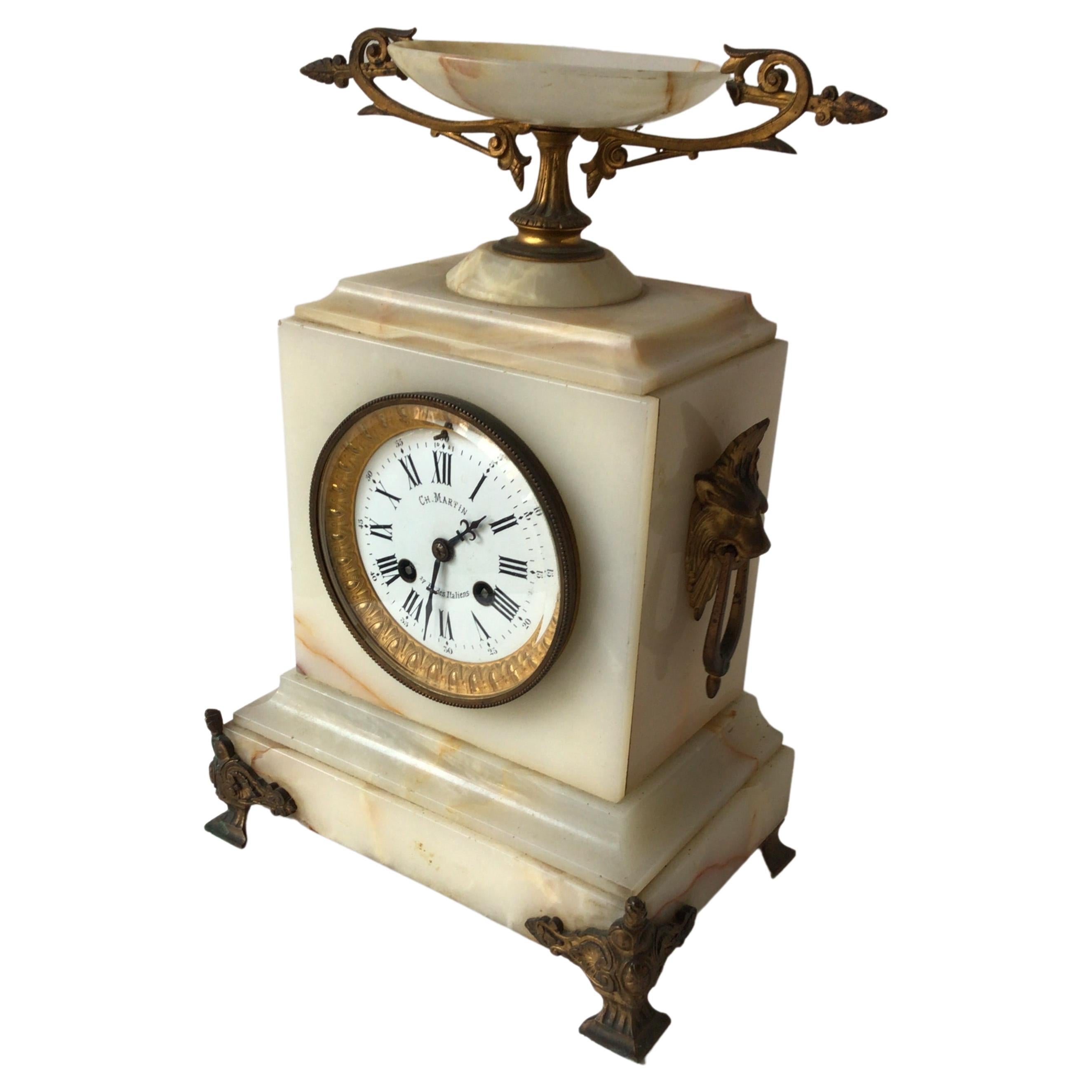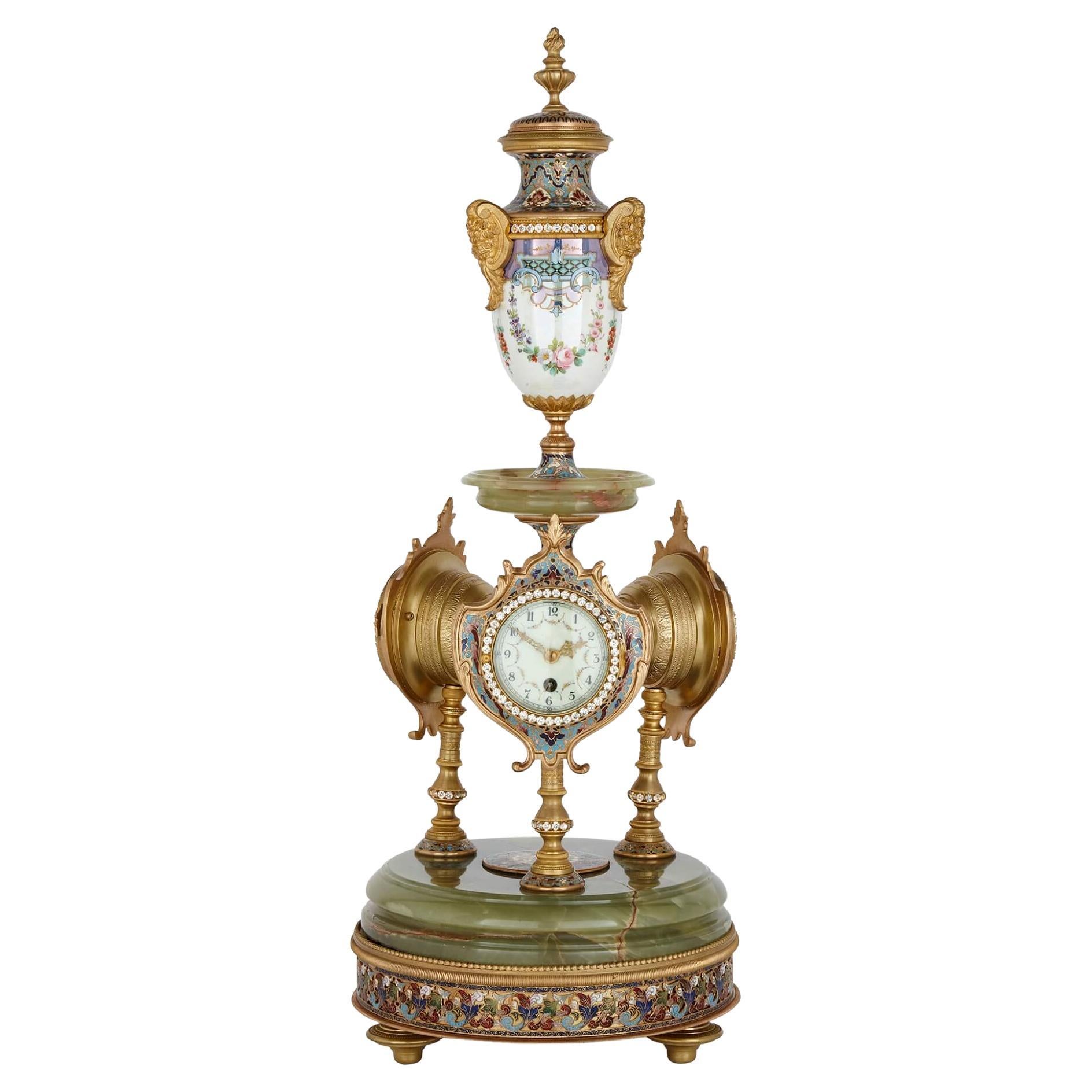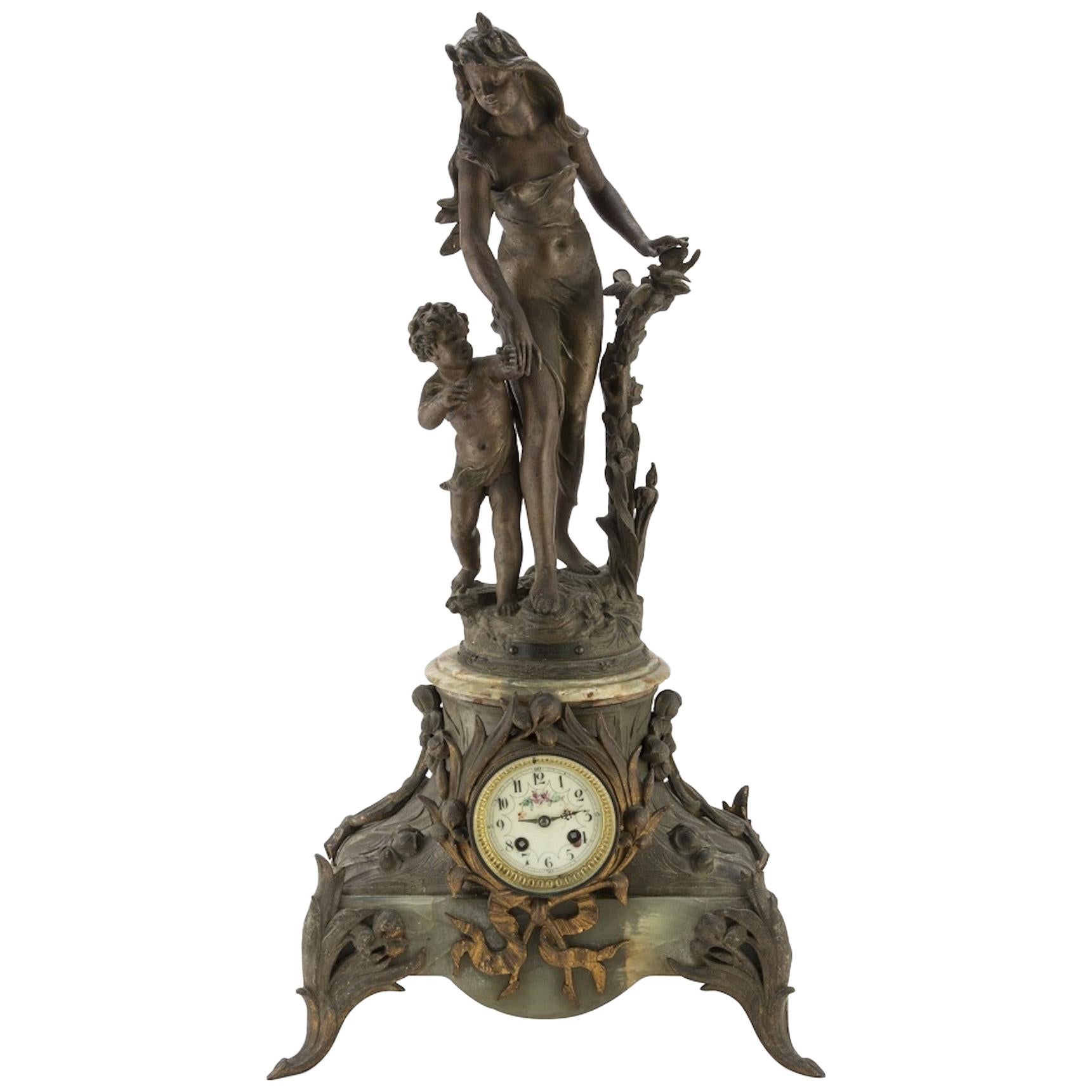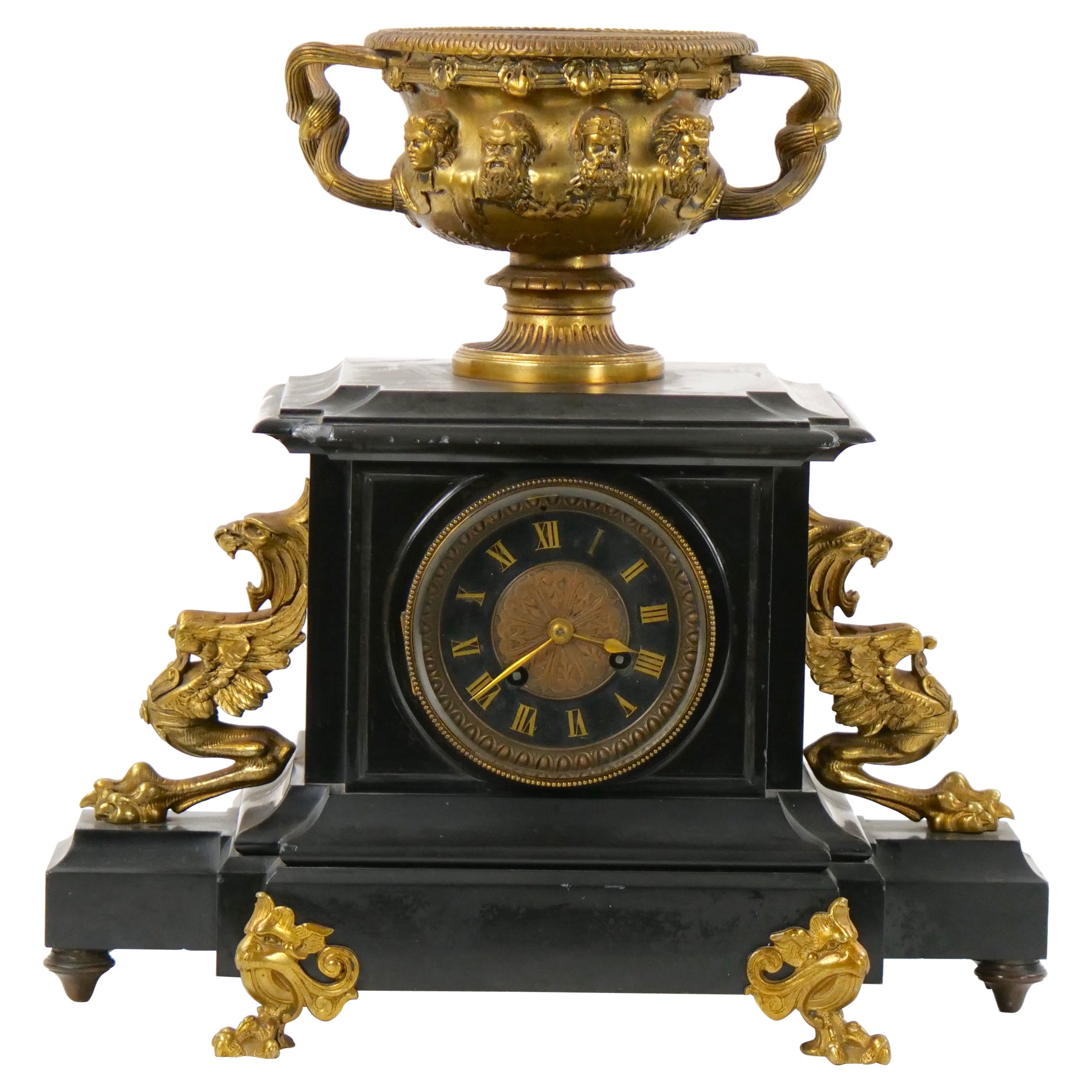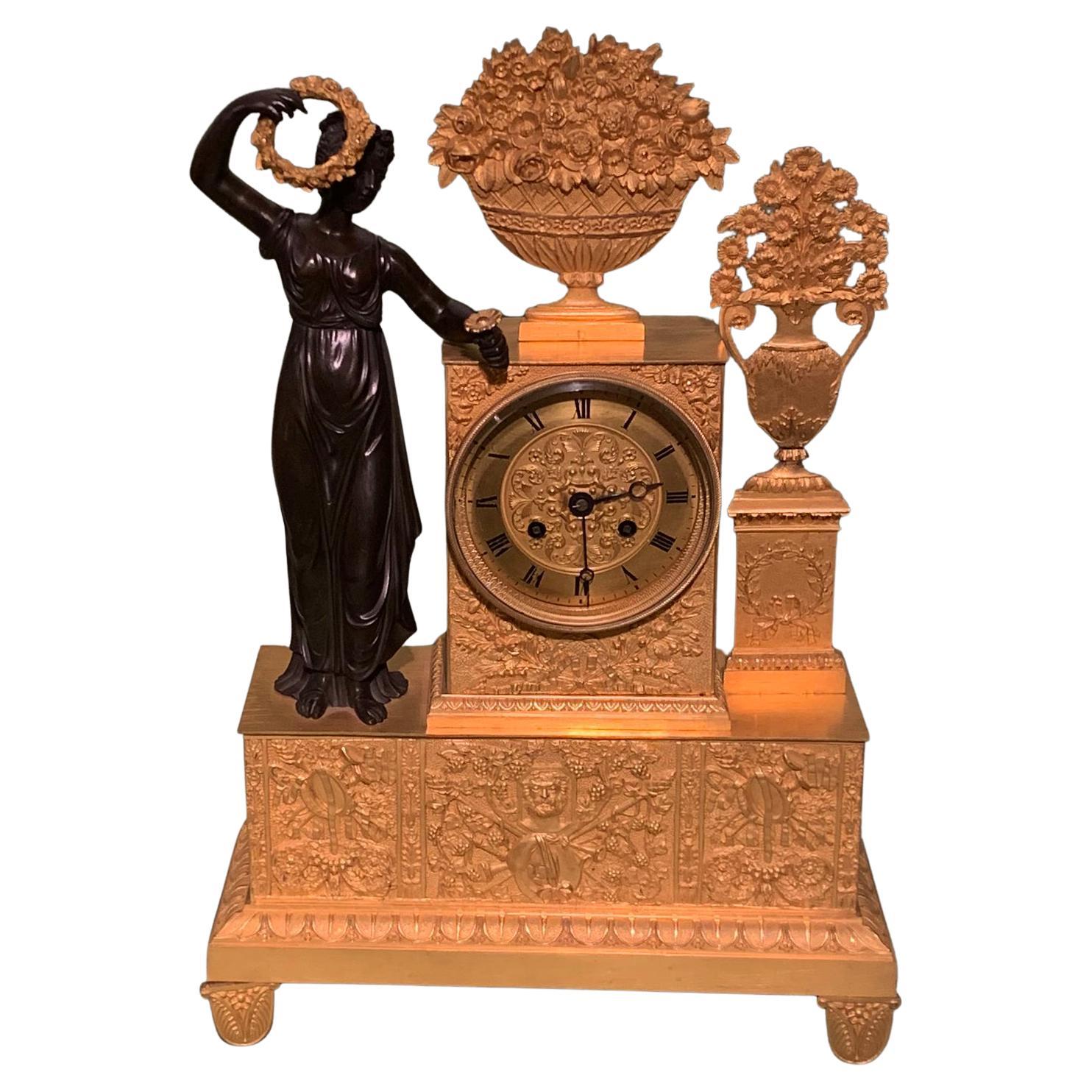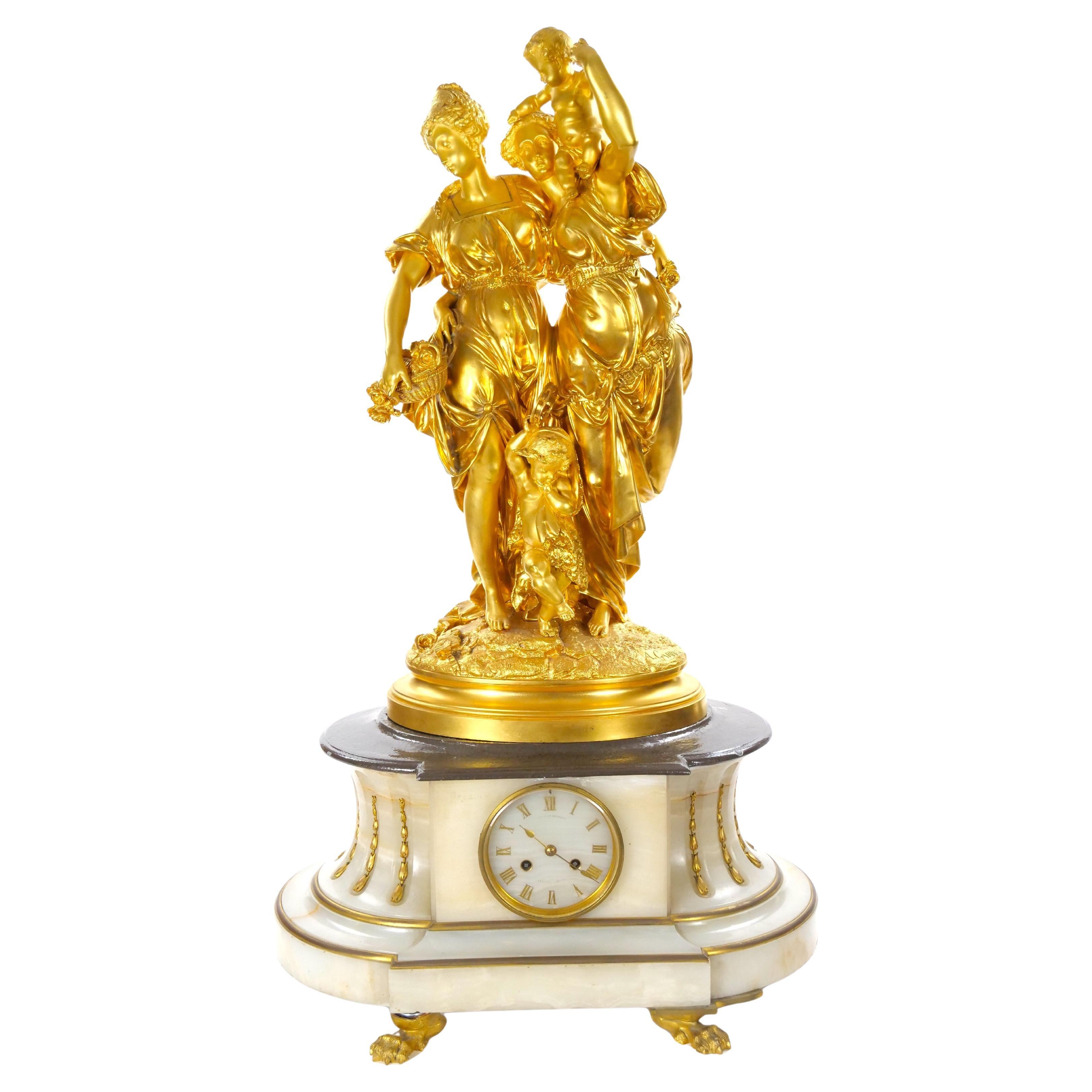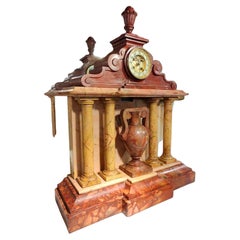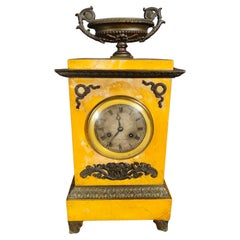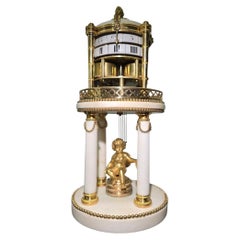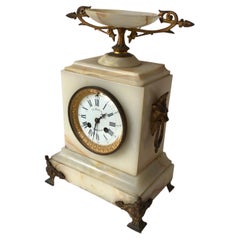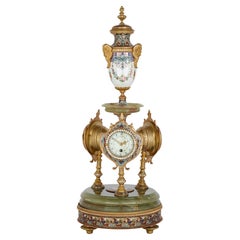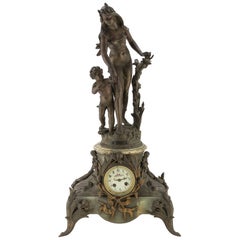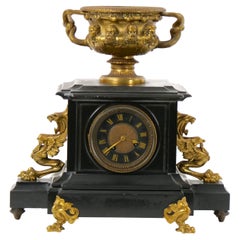Items Similar to Barbedienne Art Nouveau Onyx Clock, 19th Century
Want more images or videos?
Request additional images or videos from the seller
1 of 14
Barbedienne Art Nouveau Onyx Clock, 19th Century
$5,329.92
£3,954.83
€4,450
CA$7,444.04
A$8,073.23
CHF 4,240.37
MX$98,063.13
NOK 53,061.52
SEK 49,960.38
DKK 33,901.22
About the Item
BARBEDIENNE ART NOUVEAU ONYX CLOCK
EXCELLENT CLOCK OF THE XIX CENTURY MADE IN ONYX AND BRONZE BY BARBEDIENNE-SIGNED ON THE CLOCK AND ON THE CUP ART NOUVEAU.
IT IS IN EXCELLENT CONDITION AND MEASURES: 45X35X25 CM.
Good condition.
- Dimensions:Height: 13.78 in (35 cm)Width: 17.72 in (45 cm)Depth: 9.85 in (25 cm)
- Style:Baroque (In the Style Of)
- Materials and Techniques:
- Place of Origin:
- Period:
- Date of Manufacture:19th Century
- Condition:Wear consistent with age and use. very good condition.
- Seller Location:Madrid, ES
- Reference Number:1stDibs: LU5779230781292
About the Seller
4.8
Platinum Seller
Premium sellers with a 4.7+ rating and 24-hour response times
Established in 2005
1stDibs seller since 2021
377 sales on 1stDibs
Typical response time: <1 hour
- ShippingRetrieving quote...Shipping from: Madrid, Spain
- Return Policy
Authenticity Guarantee
In the unlikely event there’s an issue with an item’s authenticity, contact us within 1 year for a full refund. DetailsMoney-Back Guarantee
If your item is not as described, is damaged in transit, or does not arrive, contact us within 7 days for a full refund. Details24-Hour Cancellation
You have a 24-hour grace period in which to reconsider your purchase, with no questions asked.Vetted Professional Sellers
Our world-class sellers must adhere to strict standards for service and quality, maintaining the integrity of our listings.Price-Match Guarantee
If you find that a seller listed the same item for a lower price elsewhere, we’ll match it.Trusted Global Delivery
Our best-in-class carrier network provides specialized shipping options worldwide, including custom delivery.More From This Seller
View AllFrench Portico Clock – Black and White Marble, Gilt Bronze – Early 19th Century
Located in Madrid, ES
Refined French Empire-style portico clock, dating from the early 1800s, in black and white marble, richly adorned with finely chiseled gilt bronze. The enameled dial with Roman numer...
Category
Antique Early 19th Century French Empire Table Clocks and Desk Clocks
Materials
Marble, Bronze
Great 19th Century Marble Clock
Located in Madrid, ES
Great 19th century marble clock
Beautiful marble clock from the 19th century french. It is in very good condition with some unimportant fa...
Category
Antique 19th Century French Baroque Table Clocks and Desk Clocks
Materials
Marble
19th Century Clock Empire Clock in Siena Marble
Located in Madrid, ES
XIX CENTURY CLOCK EMPIRE CLOCK IN SIENA MARBLE AND DECORATED WITH BRONZE. SUSPENSION MECHANISM WITH FILE. COMPLETE WITH ITS KEY AND PENDULUM. MEASURES: 45 CM HIGH
good condition.
Category
Antique 19th Century French Empire Table Clocks and Desk Clocks
Materials
Marble
Rare 18th-century marble and gilt bronze clock – signed "Le Chopie à Paris
Located in Madrid, ES
Magnificent 18th-century neoclassical-style clock, finely crafted in white marble and gilt bronze. It features a central putto beneath an elegant canopy supported by four columns. Th...
Category
Antique 18th Century French Neoclassical Table Clocks and Desk Clocks
Materials
Marble, Bronze
Italian Clock 19th Century Worship of Valadier
By Valadier
Located in Madrid, ES
A beautiful Italian work of the eighteenth,
The mechanism works perfectly -
Measures: 40 x 18 x 48 cm
Made in marble. possibly
workshop of Valadier.
Category
Antique 18th Century Italian Baroque Table Clocks and Desk Clocks
Materials
Marble
Empire Mantel Clock by H.Robert-Horloger De La Reine, Paris, circa 1820
Located in Madrid, ES
An Empire Mantel Clock by H.Robert-Horloger De La Reine, Paris, date circa 1820-1830
A superb Empire gilt and patinated bronze mantel clock of eight day duration signed on the white enamel dial H.Robert-Horloger a la Reine . The dial with Roman numerals and gilded steel Breguet style hands for the hours and minutes. The movement with anchor escapement, silk thread suspension, striking on a single bell, with outside count wheel. The extremely fine case featuring the standing figure of Urania, Muse of Astronomy holding a pen in her left hand which points to a star-studded globe adorned with the signs of the zodiac around its circumference, the globe set on the back of four putti upon a plinth, containing the dial with a serpent-wrapped
Paris, date circa 1820-30
Height 73 cm, width 50cm, depth 22 cm.
In addition to the above prestigious locations, clocks of this model can be found at Warsaw Castle and in the Bayerischen Nationalmuseum, Munich. The Parisian clockmaker Bailly (d. after 1818) was one of the finest of his day and as such earned the title of Horloger de LL. MM. II. Et RR (Clockmaker to Their Imperial and Royal Majesties). Working from rue de Richelieu he was with Lepaute one of the main suppliers to the Garde-Meuble. Bailly, who retired in 1818 had the responsibility of maintaining the clocks at Compiègne and the Trianons and is known to have used cases by the leading Parisian bronziers including Pierre-Philippe Thomire and Claude Galle as well as Ferdinand Schwerdfeger who supplied him with a case for a regulator surmounted by a star-studded and zodiac banded globe...
Category
Antique 19th Century French Empire Table Clocks and Desk Clocks
Materials
Bronze
You May Also Like
French 1870s Onyx Mantle Clock By CH Martin
Located in Tarrytown, NY
1870s French onyx mantle clock by CH Martin. Enamel face. I didn’t try to see if clock works, I assume it doesn’t.
Category
Antique 1870s Mantel Clocks
Materials
Onyx
Very Fine and Rare Onyx, Porcelain, Cloisonné Enamel and Ormolu Mantel Clock
Located in London, GB
Very fine and rare green onyx, porcelain, cloisonné enamel and ormolu mantel clock
French, Late 19th Century
Height 64cm, diameter 23cm
This beautiful piece is an exceptionally unusual and equally beautiful mantel clock, crafted from a variety of materials, used to showcase an array of superb decorative arts and techniques. Made in France in the late nineteenth century it is formed of green onyx, porcelain (the vase on top), cloisonné enamel and ormolu.
The dials are set upon three columns of ormolu, mounted on green onyx, and framed with enamel in red, white, and blue, floral motifs. The dials are adorned with lettering in both French and Spanish, and measure time, temperature, and pressure. An elegant decorative vase mounts the clock, crafted from porcelain, and similarly decorated with enamel elements. Rare in design and even rare in terms of pure quality, it forms a unique antique timepiece...
Category
Antique Late 19th Century French Belle Époque Mantel Clocks
Materials
Onyx, Enamel, Ormolu
Ancient Onyx and Antimony Clock, France, Late 19th Century
Located in Roma, IT
Onyx and antimony clock is an original decorative object realized in France in the end of the 19th century.
Original object realized in enamel, onyx...
Category
Antique Late 19th Century French Table Clocks and Desk Clocks
Materials
Onyx
19th Century French Bronze & Black Marble Figural Mantel Clock
By Japy Frères
Located in Tarry Town, NY
Immerse yourself in the opulence of the 19th century with this exceptional French Bronze and Black Marble Figural Mantel Clock. Crafted with meticulous artistry, this clock stands as a testament to an era where beauty, design, and function converged in breathtaking harmony. The distinguished bronze and black marble case...
Category
Antique Late 19th Century French Edwardian Mantel Clocks
Materials
Belgian Black Marble, Bronze
Early 19th Century French Bronze and Ormolu Eight Day Striking Clock
Located in London, GB
An early 19th century French eight day silk-suspension, striking clock, contained in ormolu case mounted with vases and urns of flowers with well-cast b...
Category
Antique Early 19th Century French Neoclassical Revival Mantel Clocks
Materials
Bronze, Ormolu
Antique French Gilt Bronze Ormolu-Mounted Onyx Figural Mantel Clock, Circa 1815
Located in Tarry Town, NY
An extraordinary example of Empire period craftsmanship, this grand French mantel clock was created circa 1815 by the esteemed sculptor and clockmaker Albert Ernest. It exemplifies t...
Category
Antique 1810s Mantel Clocks
Materials
Onyx, Bronze, Ormolu
More Ways To Browse
French Baroque Art
Art Nouveau Onyx
Art Nouveau Cup
Barbedienne Signed Bronze
Art Nouveau Bronze Clock
Porcelain Figurines Girl
Unique Statue
Vintage Austin Productions
Wood Sculpture Of Man
1850 Bronze Sculpture
Hagenauer Bronze
Marble Rome
Marble Signed Statue
Neoclassical Marble Statue
Antique Bronze Sculpture Artists
Antique Staffordshire Figurines
Art Deco Bronze Chiparus
Black Soapstone
